Turkey’s mosques are more than just places to pray; they’re also gorgeous tributes to Islamic art. These famous mosques in Turkey are as architecturally significant as they are attractive, from their intricate interiors to the massive grandeur of their exteriors. Non-Muslim guests are welcomed to visit mosques as long as they do it outside of prayer times. Mosques do not charge an entry fee.
Attendees should wear long-sleeved tops and ankle-length pants or skirts, with ladies bringing a scarf to protect their heads. Head scarves are available for loan in a box at the doorway of larger mosques that attract a lot of visitors. Let’s start the exploration of Turkey’s rich Islamic art legacy with our list of the famous mosques in Turkey.
Blue Mosque
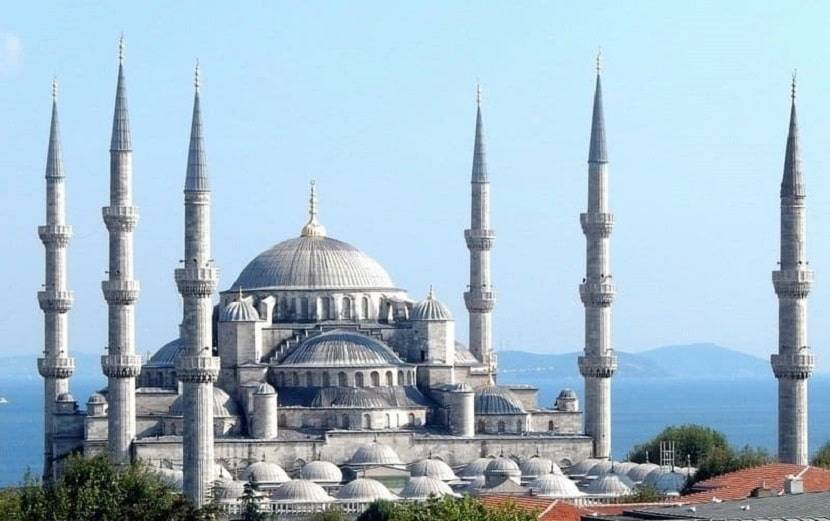
Istanbul’s Sultanahmet Mosque (Sultanahmet Cami), also known as the Blue Mosque, is Turkey’s most famous mosque. It is located in Sultanahmet, the city’s old town district, and its domes and minarets are a straight architectural counterpart to the Hagia Sophia (Aya Sofya), which dominates Sultanahmet Square on the other side.
Blue mosque – the biggest mosque in Turkey – designed by Ottoman architect Sedefkâr Mehmet Ağa and completed during Sultan Ahmet I’s reign (1603-1617), was a symbol of Ottoman imperial supremacy, with six minarets (equivalent to Mecca’s grand mosque).
Blue Mosque, the most famous mosque in Turkey Istanbul, is a top tourist site in Istanbul, thus it can be packed during the day, especially in the summer. Join the 5 days Istanbul tour for a more relaxing experience. The south door, not the main entrance, is where tourists enter the prayer hall.
Kocatepe Mosque
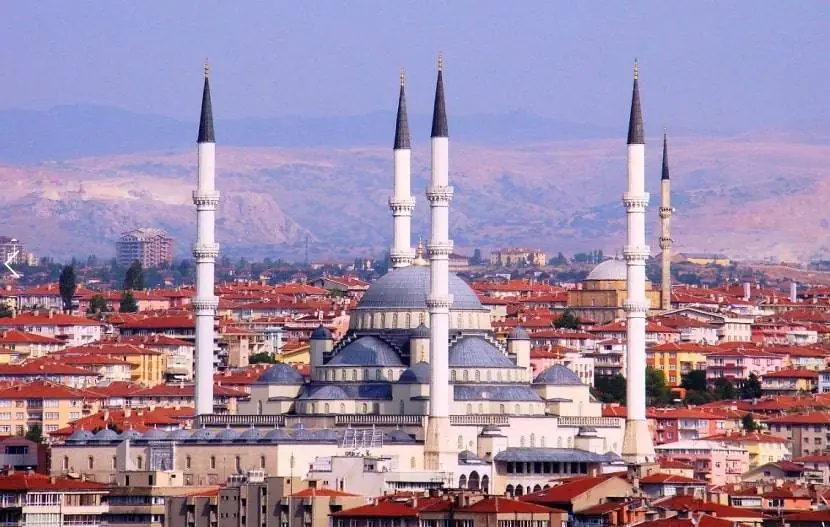
The Kocatepe Mosque is Ankara’s largest mosque. It was constructed in the Kocatepe quarter of Kzlay between 1967 and 1987, and its size and conspicuous location have made it a monument visible from practically anywhere in central Ankara.
This mosque, which can hold 100,000 worshippers, is one of the world’s largest mosques and is often regarded as the pinnacle of modern Islamic design. This neo-classical Ottoman architecture project, finished in 1987, is an eclectic building made up of the Selimiye mosque in Edirne and the Sehzade and Sultan Ahmet mosques in Istanbul.
Süleymaniye Mosque
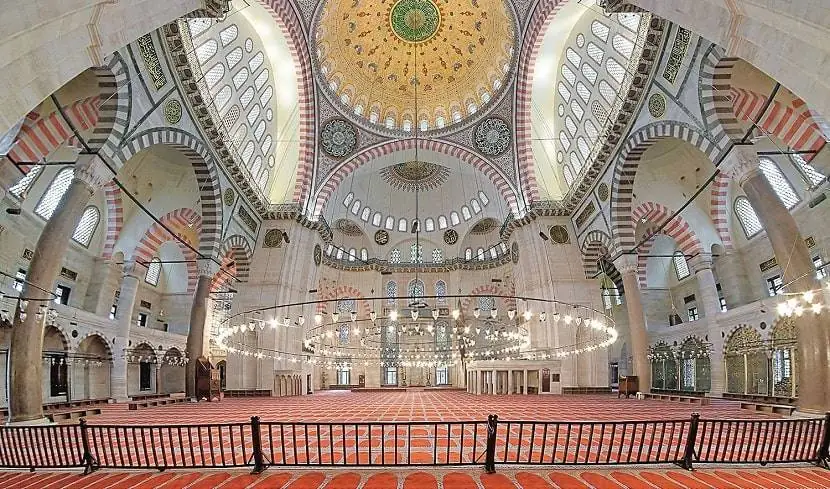
The Süleymaniye Mosque (Süleymaniye Cami) is one of Istanbul’s most well-known skyline attractions due to its hilltop location. This grand architectural project was one of the most notable works of Sinan, the Ottoman era’s most celebrated architect, and was constructed during the reign of Sultan Süleyman I (“Süleyman the Magnificent” reigned from 1520 to 1566).
The prayer hall’s huge domed ceiling, with its Iznik tiles mihrab, stained-glass windows, and finely carved woodwork features, offers a calmer interior environment than the younger mosque down the hill, while being overshadowed in tourist interest by the Blue Mosque.
Bursa Grand Mosque
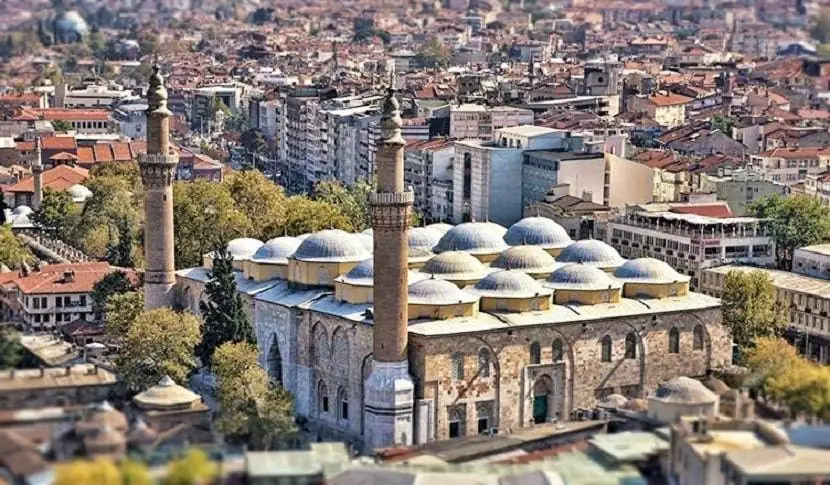
Bursa, the Ottoman Empire’s first capital, has a richness of early-Ottoman architecture. The Grand Mosque (Ulu Cami), the city’s most famous structure, is located in the centre of town, encircled by a wide bazaar area of well-restored hans (caravanserais) that date back to Bursa’s historic trading routes.
The mosque was built in 1399 by Sultan Beyazt I (reigned 1389-1402) in a Seljuk style. There are 20 domes on the metal roof. The sultan’s over-ambitious promise to build 20 mosques after conquering the Crusaders resulted in this architectural element. Instead, he constructed a single mosque with that many domes.
Rüstem Paşa Mosque
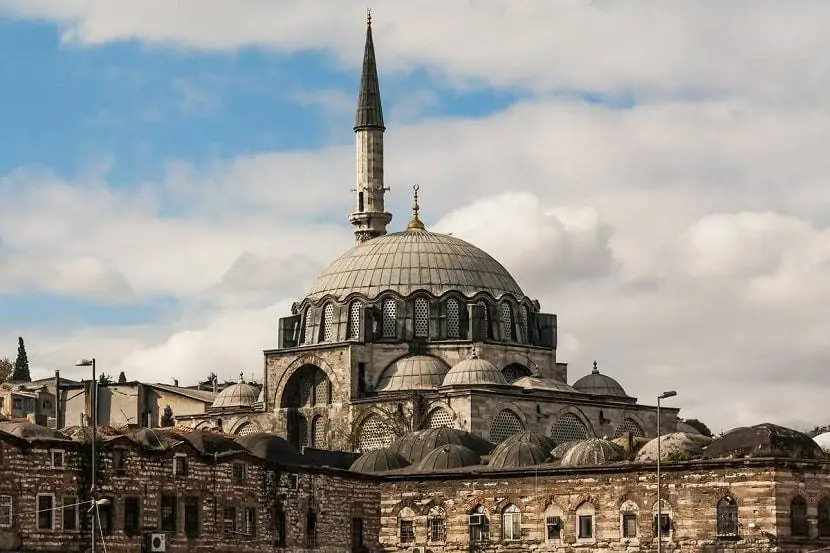
It may not have the vast architectural grandeur of Istanbul’s most famous imperial mosque constructions, but it is worth visiting if you want to see stunning Iznik tile work up close.
The Rüstem Paşa Mosque (Rüstem Paşa Cami), another Ottoman edifice designed by Sinan, was funded by Sultan Süleyman I’s grand vizier Rüstem Paşa.
The floral and geometric decorations on the Iznik tile panels embellish both the mosque’s outer wall and its interior. Because of the mosque’s smaller scale, it’s easier to inspect the fine artwork rather than being overwhelmed by the sheer magnitude and quantity of tile work.
Selimiye Mosque
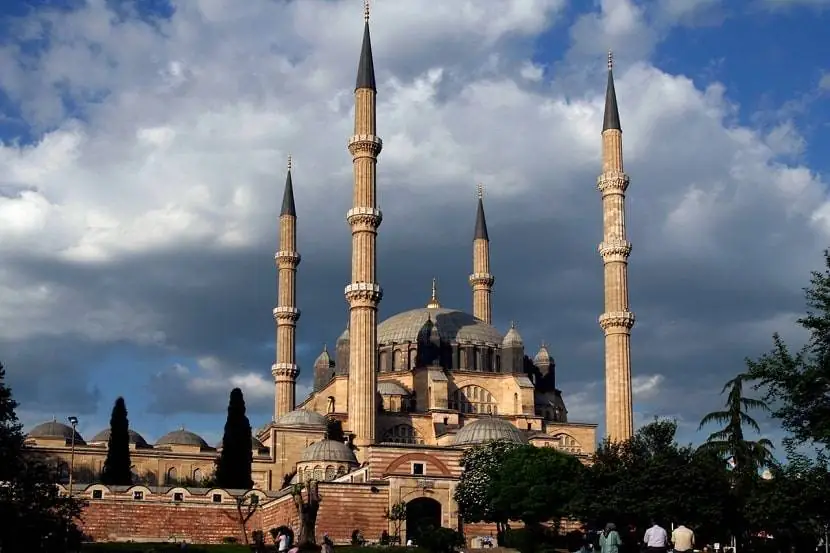
Selimiye Mosque is another one of the famous mosques in Turkey. Edirne was the Ottoman Empire’s second capital, however the city’s most important piece of Ottoman architecture dates from Sultan Selim II’s reign (Sultan Süleyman I’s son; reigned 1566-1574) and was designed by Sinan, the imperial court’s senior architect.
The Selimiye Mosque’s (Selimiye Cami) four thin minarets rise to a height of 71 metres. Historians believe that they were the world’s highest mosque minarets at the time of their erection. The main interior dome is 31.3 metres in diameter and is centred around an octagonal support structure of pillars and arches.
♦ 7 Days Turkey Tour Package – Highlights of Turkey
Divriği Grand Mosque
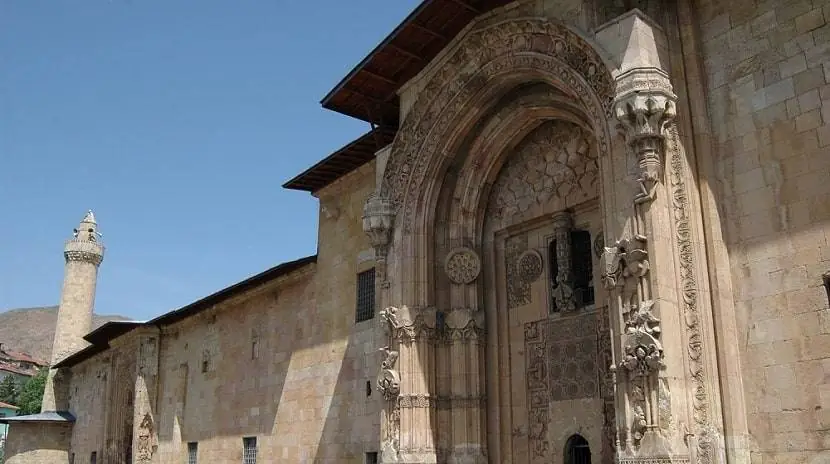
One of Turkey’s most famous mosques in Turkey, situated on a hill overlooking the tiny village of Divrii (166 kilometres southeast of Sivas), has been designated as a UNESCO World Heritage Site for its exquisite artistry.
The Grand Mosque (Ulu Cami) of Divrii and its accompanying darüşşifas (hospital) originate from 1228, when much of Anatolia was administered by distinct Seljuk-Turk states (which would later coalesce into the Ottoman Empire). One of these principalities, Divrii, was controlled by Emir Ahmet ah and his wife Melike Turan Melik, who supervised this massive construction project.
Sultan Beyazıt II Mosque
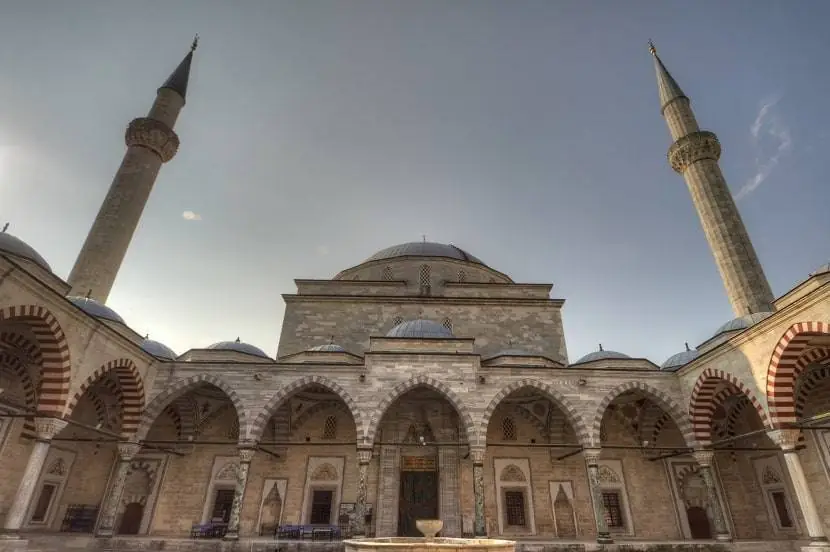
Since 1486, the Sultan Beyazt II Mosque (Sultan Beyazt II Cami) has stood in the heart of Amasya, overlooking the Yeşilrmak River. Many of the ancillary buildings that made up the original mosque complex, such as the medrese (theological college) and soup kitchen, are still surviving today in the mosque’s garden.
Before approaching the mosque, make a note of the ablution fountain with its roof, which features extremely detailed Amasya murals painted on its ceiling.
Mahmud Bey Mosque
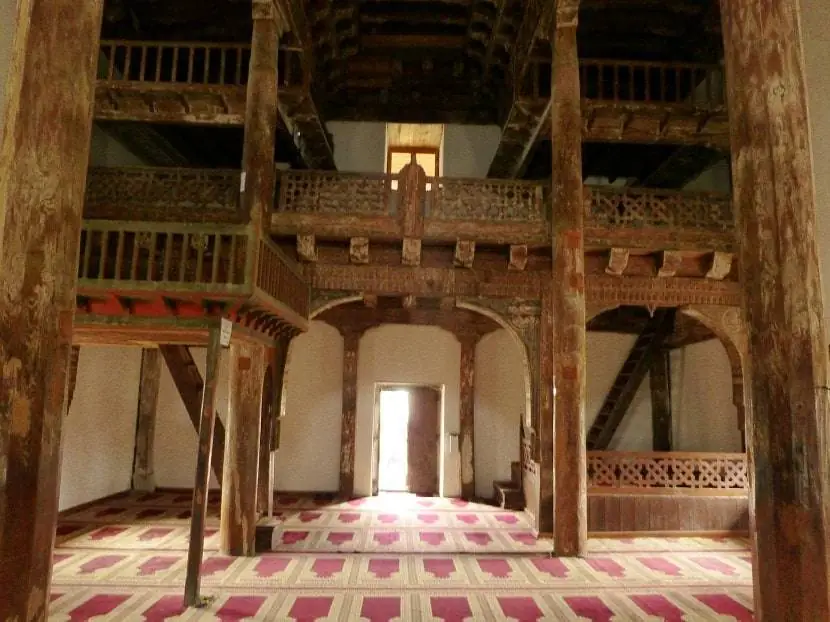
Anyone interested in mosque interior design should make a special journey here. This modest-looking mosque in the hamlet of Kasaba (17 kilometres from Kastamonu) was built in 1366 and is one of Turkey’s finest surviving instances of painted-wood mosque interiors.
Inside of Mahmud Bey Mosque – one of the famous mosques in Turkey, beautiful floral and geometric painted designs decorate the wooden ceiling, wooden columns, and ornately carved wooden gallery, which are fading but otherwise well-preserved. The interior woodwork is especially significant because it was constructed without the use of nails, using a Turkish interlocking wood connection process known as kundekari.
Şakirin Mosque
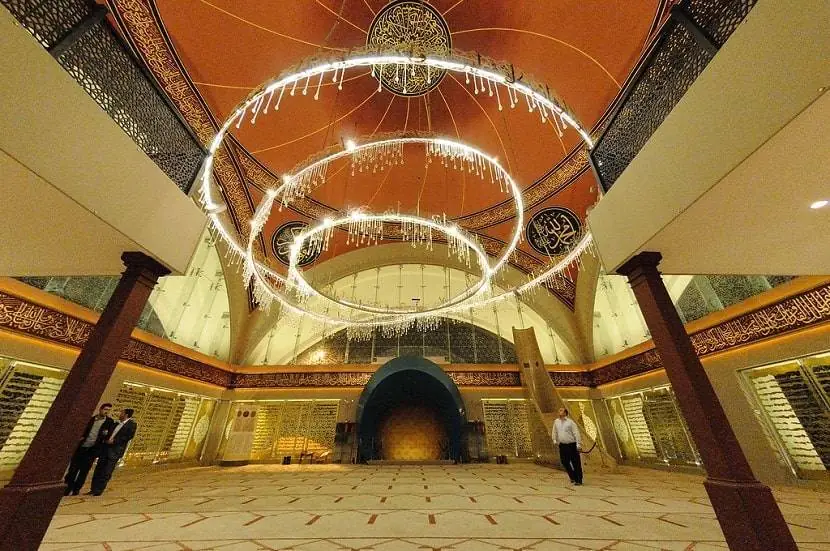
There are several modern mosques in Turkey, although practically all of them are built in the Ottoman style. The akirin Mosque (akirin Cami) in Istanbul’s Üsküdar area is one of the best places to go to see a mosque that defies tradition.
Hüsrev Tayla, the architect, and Zeynep Fadllolu, the interior designer, collaborated to develop a wholly contemporary and unique mosque design in 2009. Perforated metal screens soften the stark and minimalist stone and aluminium front. The ablutions fountain, with its central grey metal dome that reflects the mosque façade, is a must-see in the courtyard.

